Burlesque, Boneyards, and Bombs: The Other Wonders of Las Vegas
The offbeat traveler’s guide to spots beyond The Strip.
All photos by Dylan Thuras / Michelle Enemark
Western outsiders first traveled through what is now Las Vegas in 1829, when Mexican scout Rafael Rivera wandered away from the rest of his traveling party and stumbled upon a lush valley. Though today we think of the city’s surrounding landscape as dry, barren and prickling with cacti, Las Vegas, or “the meadows,” was first known and named for its abundant grasses. A lot has changed since then. The arrival of a railroad in 1905 quickly transformed Vegas into the place our minds conjure today—a mecca of lavish casinos, sky-high resorts, strip clubs, and shotgun weddings. Over 42 million tourists descend upon the city each year for a taste of gambling and glitz—but there’s a lot more to the former frontier town than what glints the brightest.
Caught up in the flashing lights of Las Vegas’ main drag, many visitors to the city never venture off The Strip. That’s their loss. Hiding around the corner is another version of Sin City—the old, weird Las Vegas. It’s still full of games, neon, and celebrities, but the games are pinball machines, the neon lights have been decommissioned, and the celebrities are 1920s gangsters and 1950s burlesque performers. Here’s a beginners guide to these lesser-known Las Vegas landmarks, an itinerary perfect for the curious traveler looking to dig into the city’s rich history and many selves.
THE NEON BONEYARD

The signs lean one on top of each other forming a collage of Las Vegas history. (Photo by Dylan Thuras)
The Neon Boneyard has rightfully become a Las Vegas institution. Its two-acre lot is stacked high with decommissioned signs of Las Vegas’ yesteryear, a physical embodiment of Las Vegas history.
Over the years the Young Electric Sign Company or YESCO, created many of of Las Vegas most recognizable neon displays. Once retired, they were cast off to the so-called ”boneyard.” These signs donated to the Neon Museum formed the core of the Neon Boneyard’s collection.
Over 150 decommissioned neon signs are found here. Some are from famous locations like the Sahara, Caesar’s Palace, the Stardust, and the Golden Nugget. Some are classics; both Binion’s Horseshoe and the original Aladdin’s lamp that once adorned the long-gone Aladdin Casino now sit unlit in the dust. Sunlight glints off of broken glass and rusted metal beckoning passersby into motel rooms with color TVs, wedding chapels, and smaller casinos now lost to time. The final collection is a loud mix of midcentury modern design, brash showmanship, and moments frozen in thousand-watt bulbs and graceful glass tubing.

A vast variety of typography is found in the Neon Boneyard.
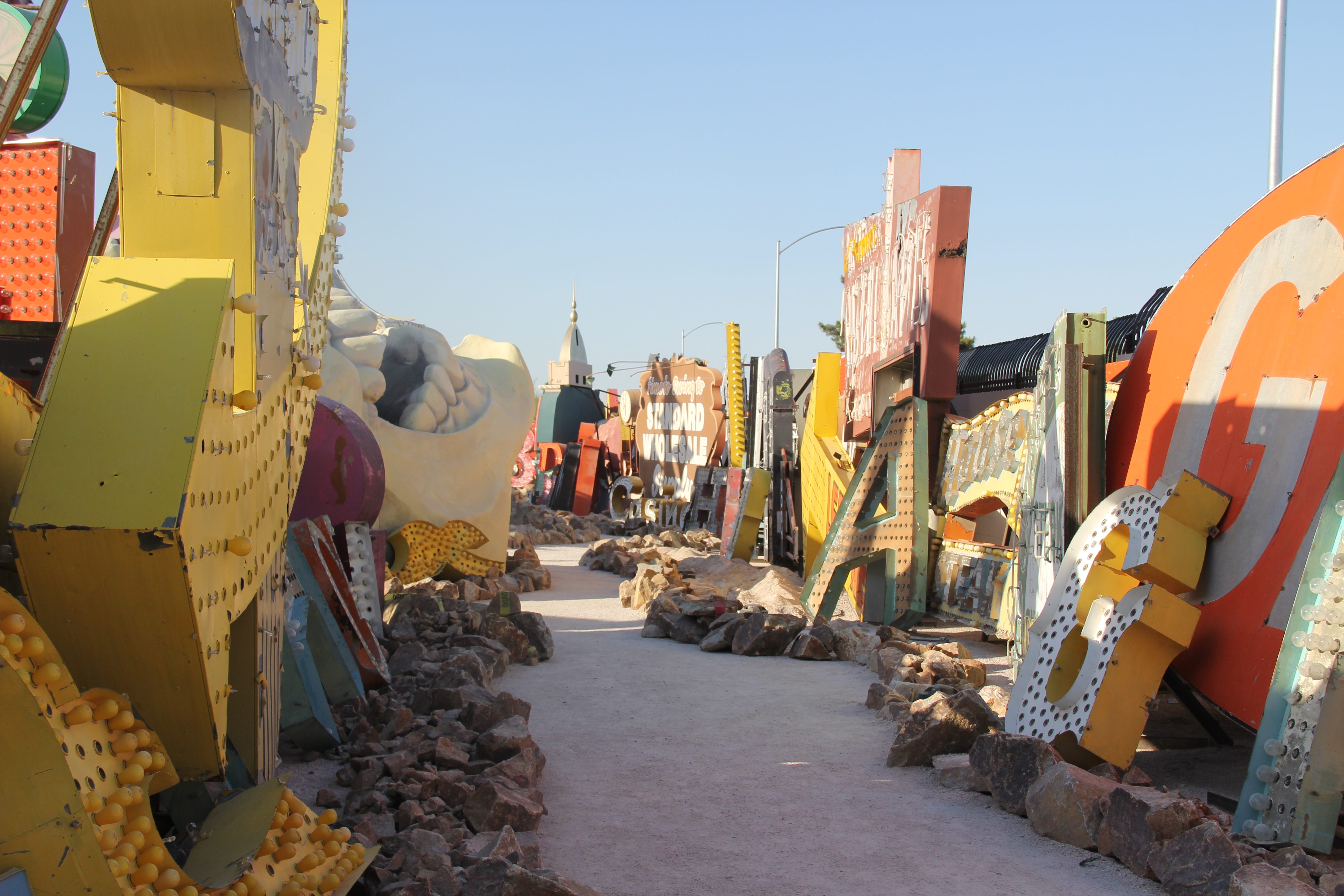
View the Neon Boneyard with Google Maps, and you will find a huge skull smiling up at you. Once part of Treasure Island, his massive bony head now lives in the Neon Boneyard greeting incoming flights and passing satellites.

Though most are defunct, a few of the signs still work and can be turned on for evening tours.
Visitors looking to lose themselves among the decades of Las Vegas iconography on display should aim for the earlier tours of the day to avoid the midday sun (shade is scarce during the hour-long exploration). Tours tend to sell out, so we recommend buying tickets in advance.
THE BURLESQUE HALL OF FAME
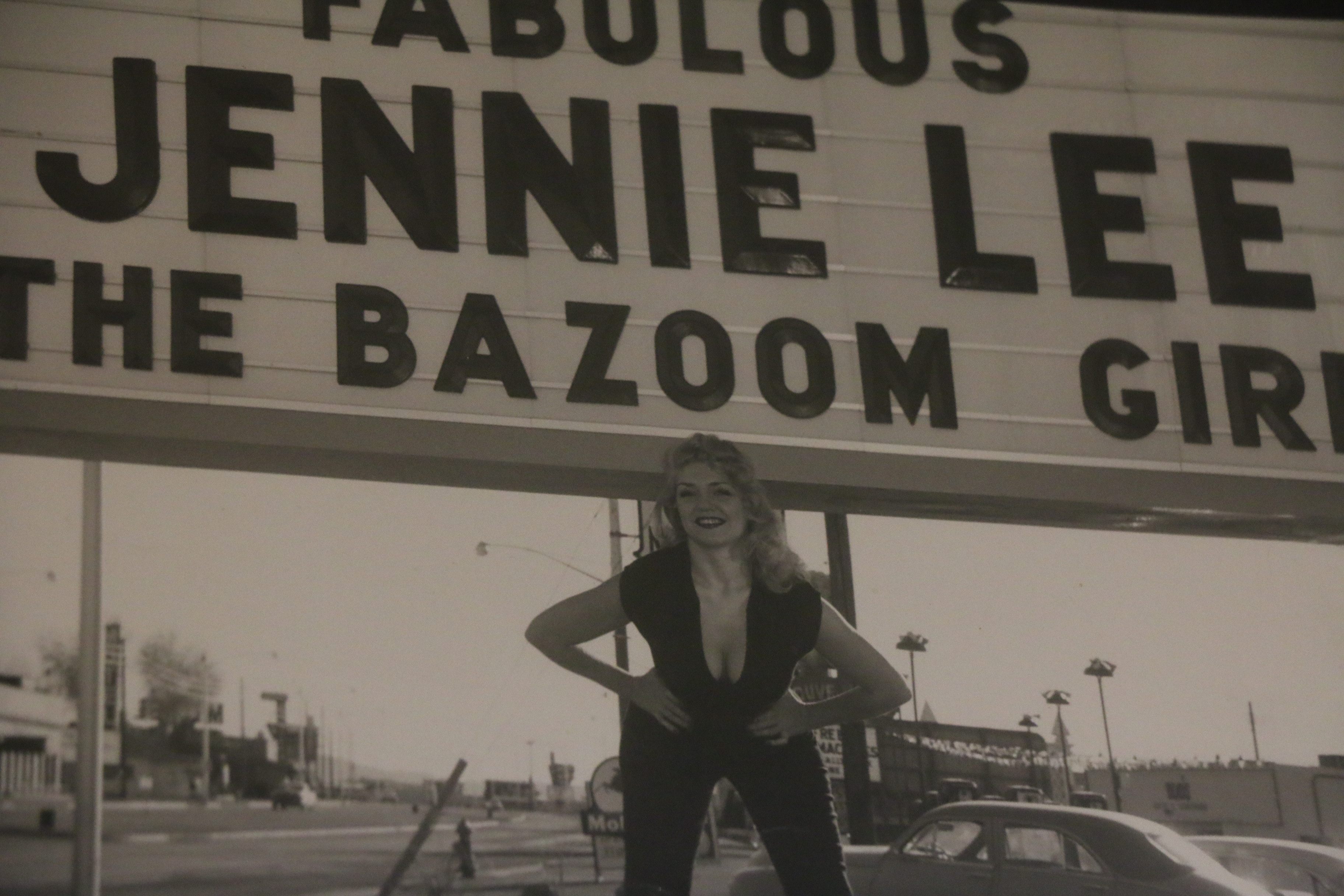
A popular act in the 1950s and 1960s Jennie Lee longed to start a burlesque museum.
Many of the formerly-flashing signs in the Neon Boneyard advertise a particular Las Vegas institution: the showgirl. Visitors looking to learn more about the history of burlesque in Las Vegas and beyond should drop into the Burlesque Hall of Fame to take a look at a collection that started with the remarkable Jennie Lee.
Known as “The Burlesque Version of Jayne Mansfield,” “Miss 44 and Plenty More,” and “The Bazoom Girl,” Jennie Lee was a popular stage act in the 1950s and 1960s. A fierce advocate for dancers sticking together, she helped to start The Exotic Dancers’ League of North America, the first union for dancers. She served as the organization’s first president and often spoke of her dream to start a burlesque museum.
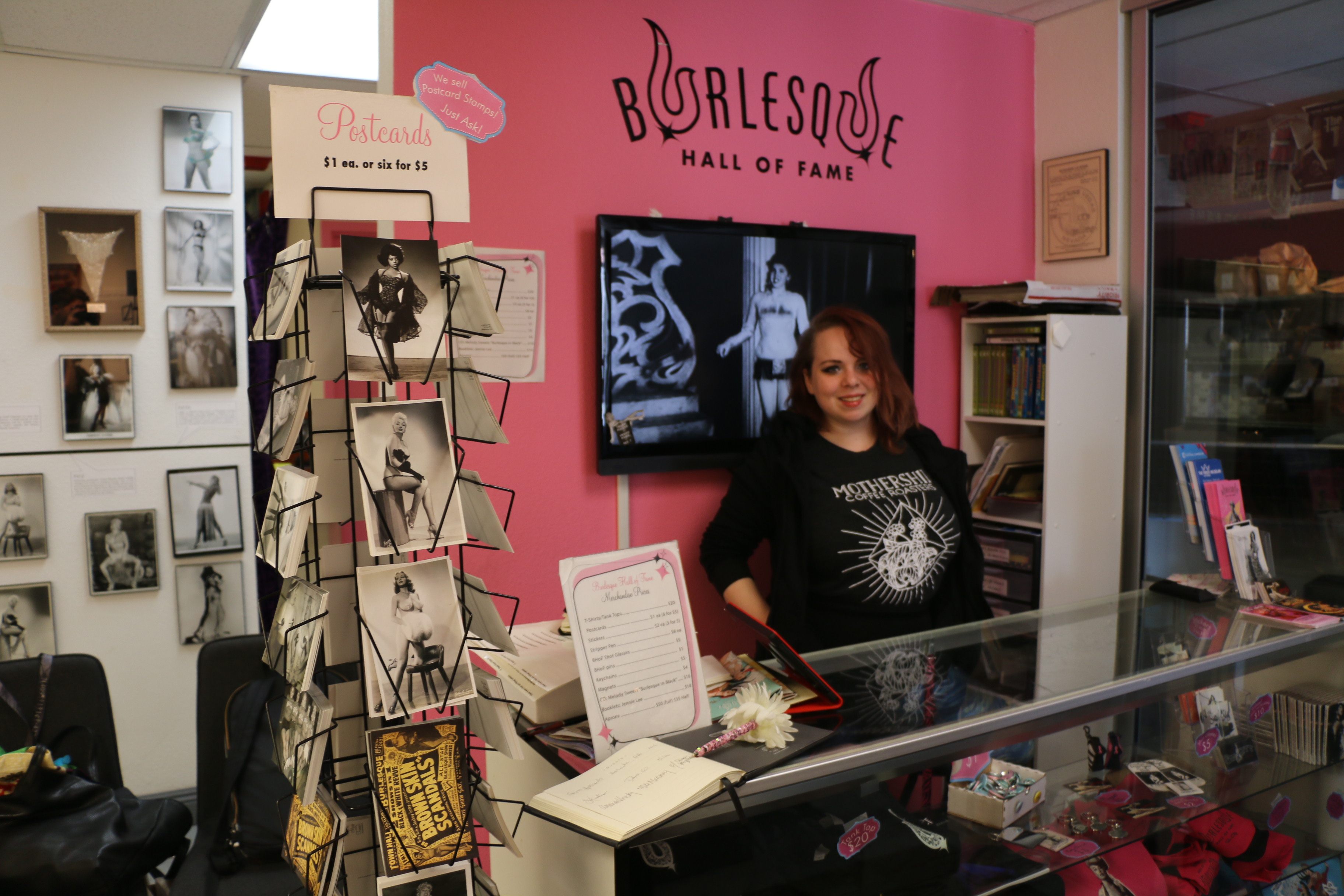
The staff are friendly and helpful and can help answer questions about the history of burlesque.
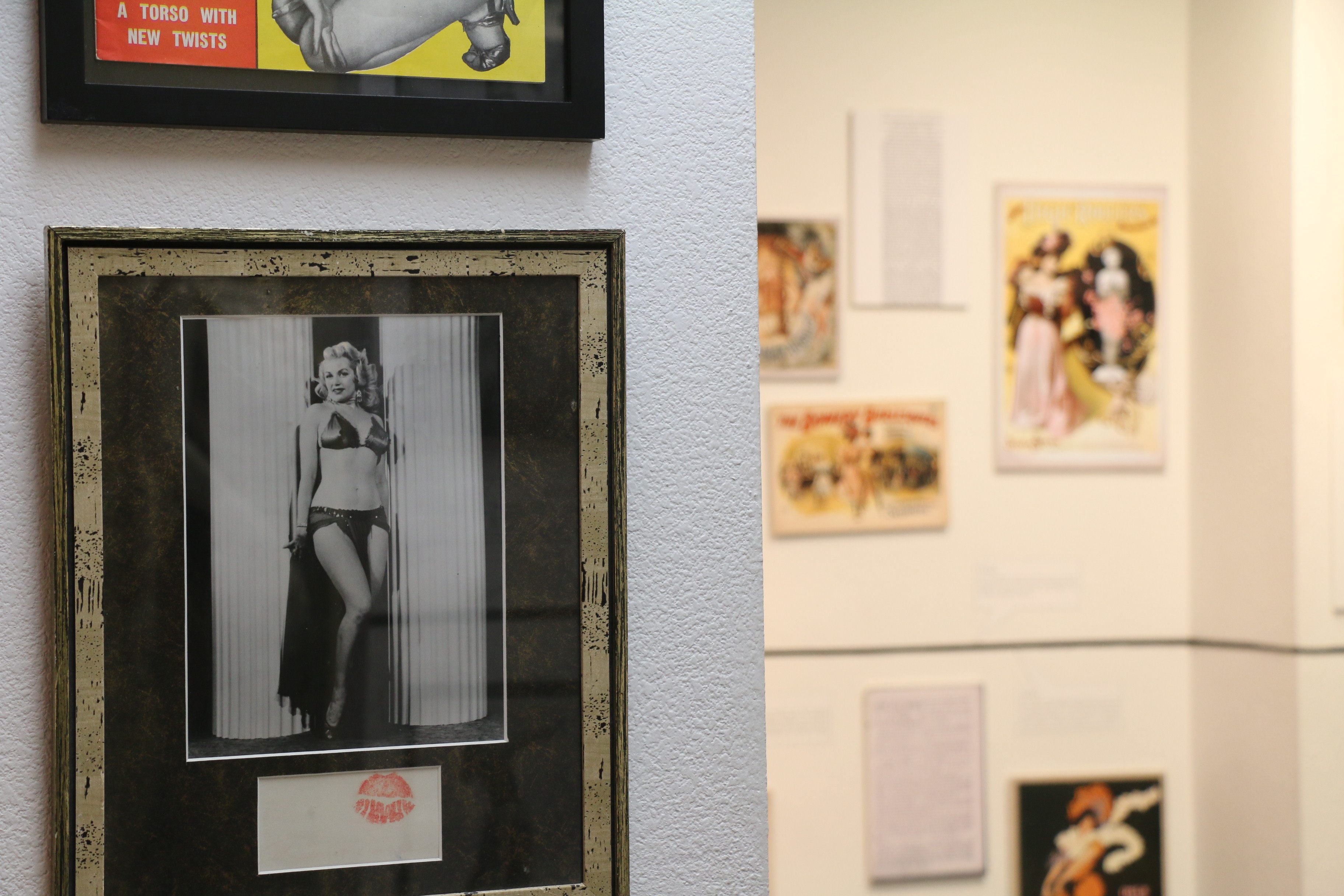
Portrait of a burlesque dancer, complete with her kiss.
In order to get the museum started, Lee gathered memorabilia from her fellow dancers. Unfortunately, she didn’t live to see her dream realized. After Lee’s death in 1990, the endeavor was taken up by her friends and colleagues. Today, the Burlesque Hall of Fame can be found on Fremont Street, although it is slated for a move to the Art District in the fall of 2016.
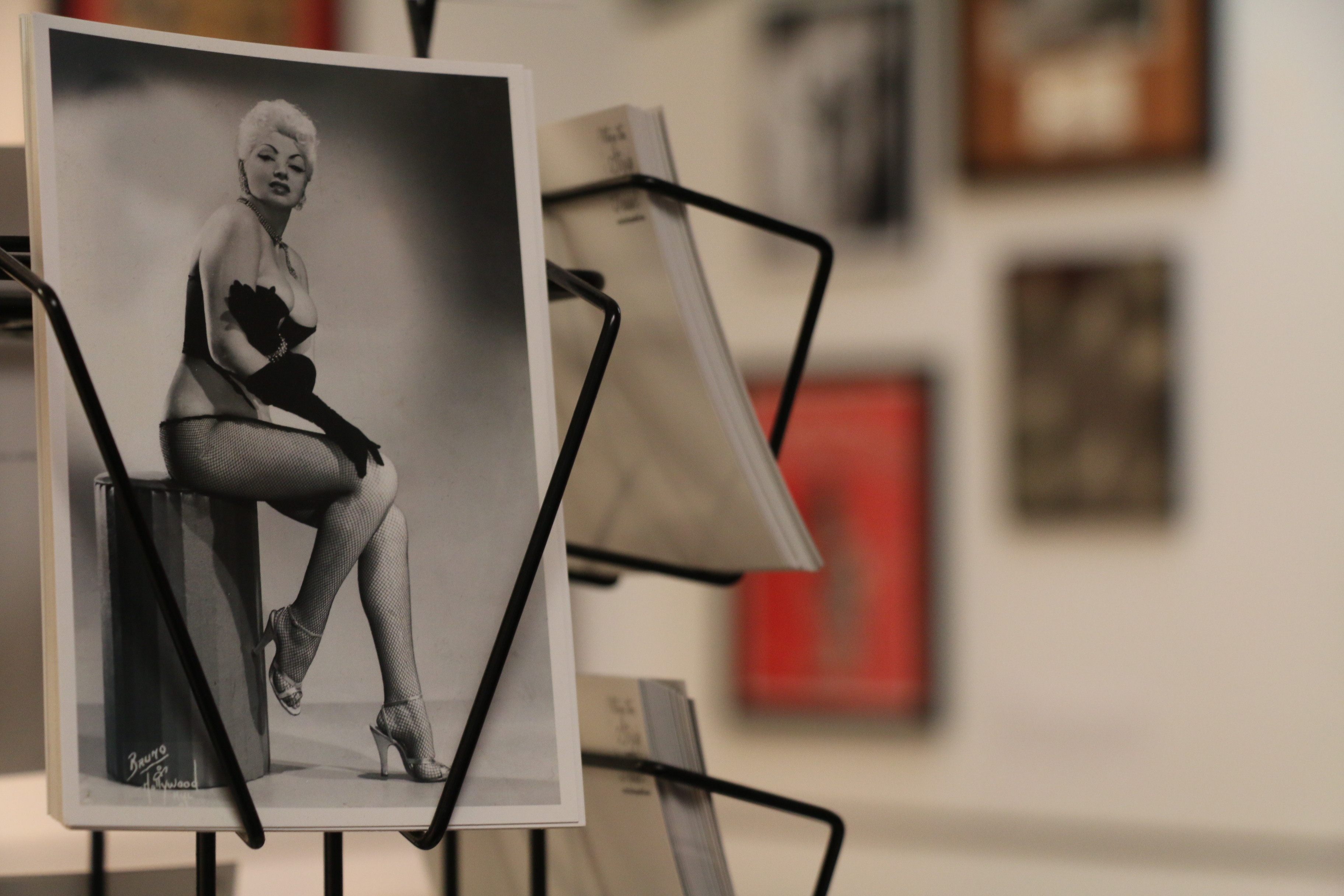
The collection includes gloves, fans, posters, and pasties of such iconic Burlesque stars as Lili St. Cyr, Chesty Morgan and Gypsy Rose Lee.
THE MOB MUSEUM

The bulletholes in the St. Valentine’s Day massacre wall wall have been circled and painted red.
Organized crime and its shadowy connection to the gaming industry is a defining part of Las Vegas lore. However, one of the most infamous pieces in the Mob Museum’s collection is actually an import.
In 1929 in Chicago, seven members of Bugs Moran’s gang were apprehended by police officers and ordered to line up facing a brick wall, so that they could be cuffed. Unbeknownst to them, the cops were actually members of Al Capone’s gang in disguise. Rather than cuffing the rival gang members, they simply shot them dead.
The wall’s bricks were bought and shipped to Canada by a businessman, George Patey, who exhibited them until 1968 (some report that he did so in a wax museum, others say he toured them around American shopping malls). In 1971, he opened a nightclub with the brick wall assembled behind a sheet of plexiglas in the men’s bathroom, so that patrons could attempt to aim their pee at the bullet holes. (Though Jimmy Stewart and Robert Mitchum were both patrons, their success in hitting the target is a detail lost to history.)
After the nightclub closed, the bricks lived in storage until 1997, when Patey tried to auction them off. Failing to do so, he instead decided to sell the wall brick-by-brick to gangster enthusiasts, until he passed away in 2004. The remaining bricks were left to his niece, who finally sold them to the Mob Museum in 2012. Somewhere along the line, the 85-year-old bloodstains were enhanced with bright red paint (for subtlety’s sake).
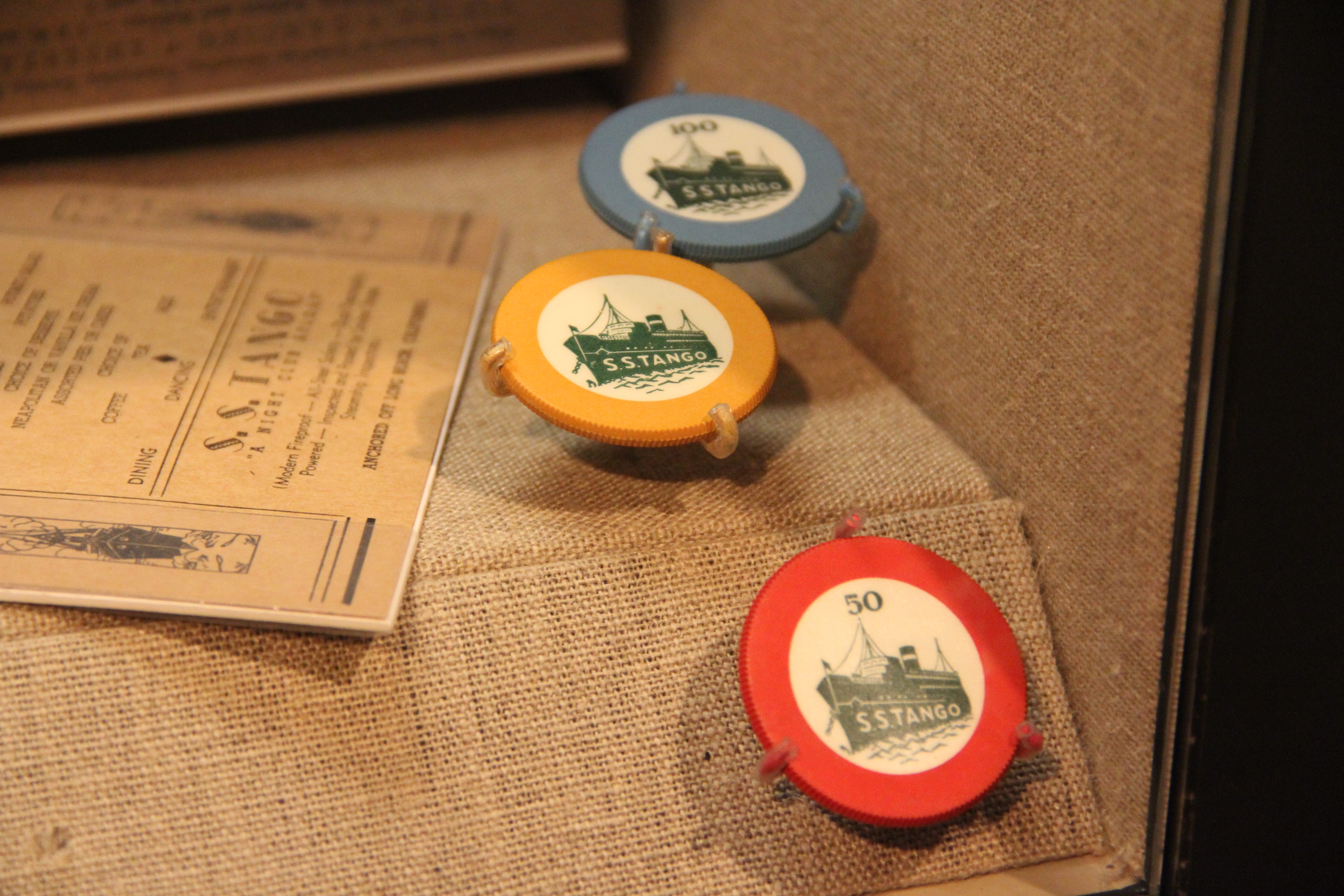
Chips from the S.S. Tango.
The Mob Museum is also home to numerous interesting exhibits on illegal gambling operations and bootlegging. One of the most intriguing of these enterprises is the S.S. Tango, a luxury casino on a ship that was anchored three miles from the California coast, floating in international waters. The State of California eventually managed to circumvent the three mile limit, and sailed out to arrest the casino’s owner. Allegedly, he refused to let them board his ship and instead turned the ship’s fire hoses on the assembled law enforcement, resulting in an eight-day standoff.
LOTUS OF SIAM
Walking amongst neon boneyards, showgirls, and mobsters works up a serious appetite. While most Las Vegas tourists are standing in a buffet line, the hungry Atlas Obscura adventurer should head just past the end of The Strip to the easily overlooked (but unreasonably delicious) Lotus of Siam.

The strip mall is home to a wide variety of cuisines from Indian to sushi and one suspects they may all be delicious.
Hidden in a strip mall past the last of The Strip’s mega casinos, the Lotus of Siam would be easy to drive right past. However, this unassuming little spot has deservedly been called the best Thai restaurant in North America. Although it can take weeks to get a dinner reservation, the Atlas team managed to slip in for a Tuesday lunch without a wait.

The Tom Kha Kai (Bangkok Style) soup is profoundly good.
The huge menu of over 150 choices makes it difficult to know where to start, but it is hard to go wrong. Ranging from the sticky rice dishes of the country’s northern regions to classic noodle dishes, the food is spectacular. Our test crew went for a papaya salad, golden tofu, and a coconut-heavy Bangkok-style soup.

The Golden Tofu should not be thought of as a second choice to the meat dishes. Every bit as good, the tofu is lightly crisp on the outside and almost magically soft and fluffy on the inside.
Even just a small sampling of the dishes on the menu will leave you well-sated for the next off-Strip location (we know, because we probably overdid it). Appropriately feeling like we were about to explode, we went out towards the desert to experience Las Vegas’ atomic past.
THE NATIONAL ATOMIC TESTING MUSEUM

A selection of Geiger counters at the Atomic Testing Museum, a not-for-profit dedicated to the history of atomic testing, much of which happened within sight of Las Vegas.
The National Atomic Testing Museum tells the story of the nearly 100 nuclear bombs detonated in this area between 1951 and 1963. Although it’s been some time since mushroom clouds billowed against the desert sunset, the National Atomic Testing Museum is dedicated to keeping that history alive.
Starting in 1951, the Nevada Test Site, or NTS, located about 65 miles northwest of the museum, was a very busy place, and most of the iconic images and photos from what we think of as the nuclear era come from the Nevada Test Site.
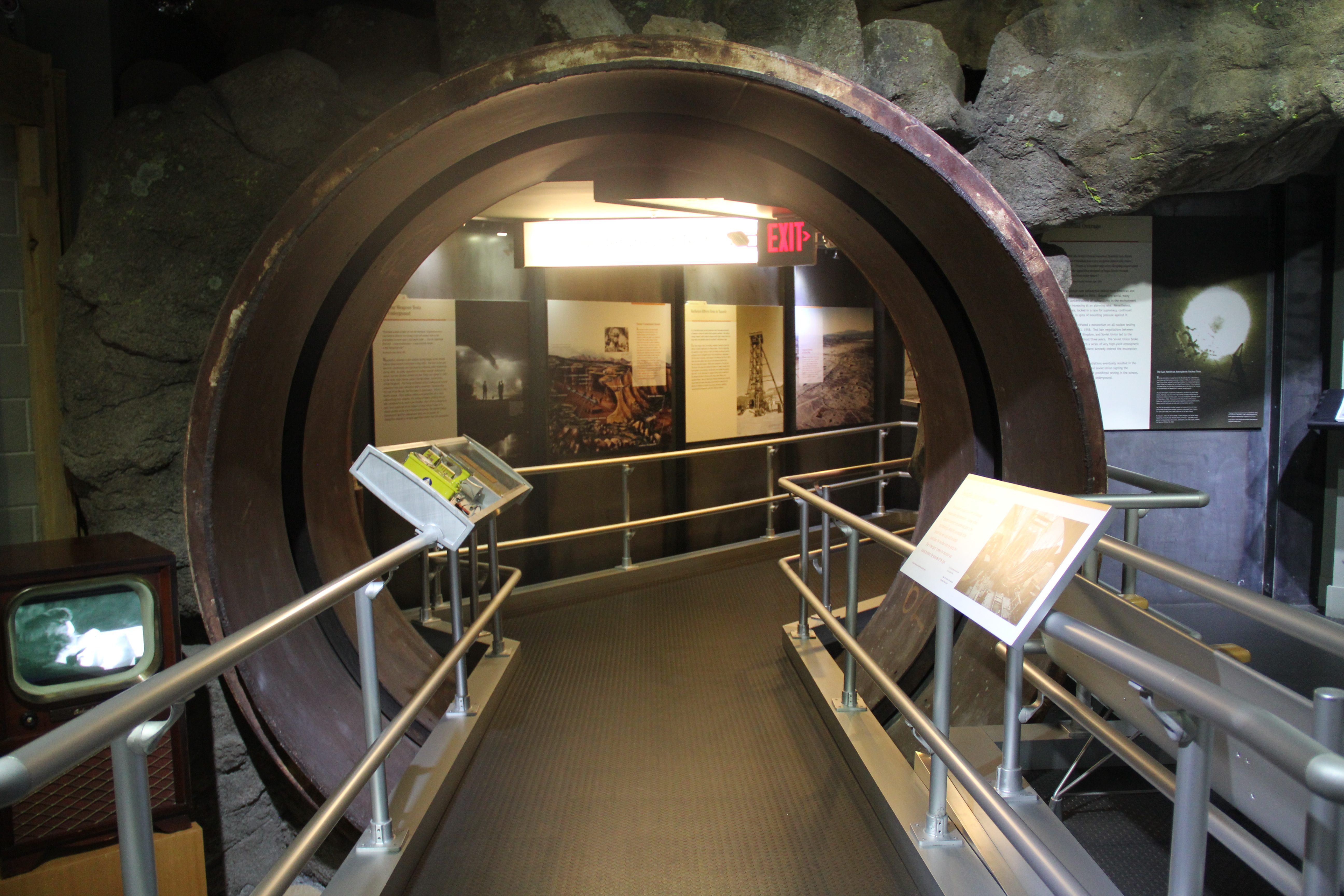
The museum does a nice job of creating an atmosphere of being in an underground testing facility.
Housing over 12,000 artifacts, the sobering museum showcases not only the history of the Nevada Test Site, but tells the story of the nation’s nuclear program, and its impact on Las Vegas and the surrounding communities. During the 50s and 60s, the population in Las Vegas doubled and later tripled with people looking for jobs on the cutting edge of technology.
The museum, affiliated with the Smithsonian Institute, is not just Geiger counters (shown above) and old black and white photos — it also highlights the pop culture and the sociological trends surrounding atomic testing.
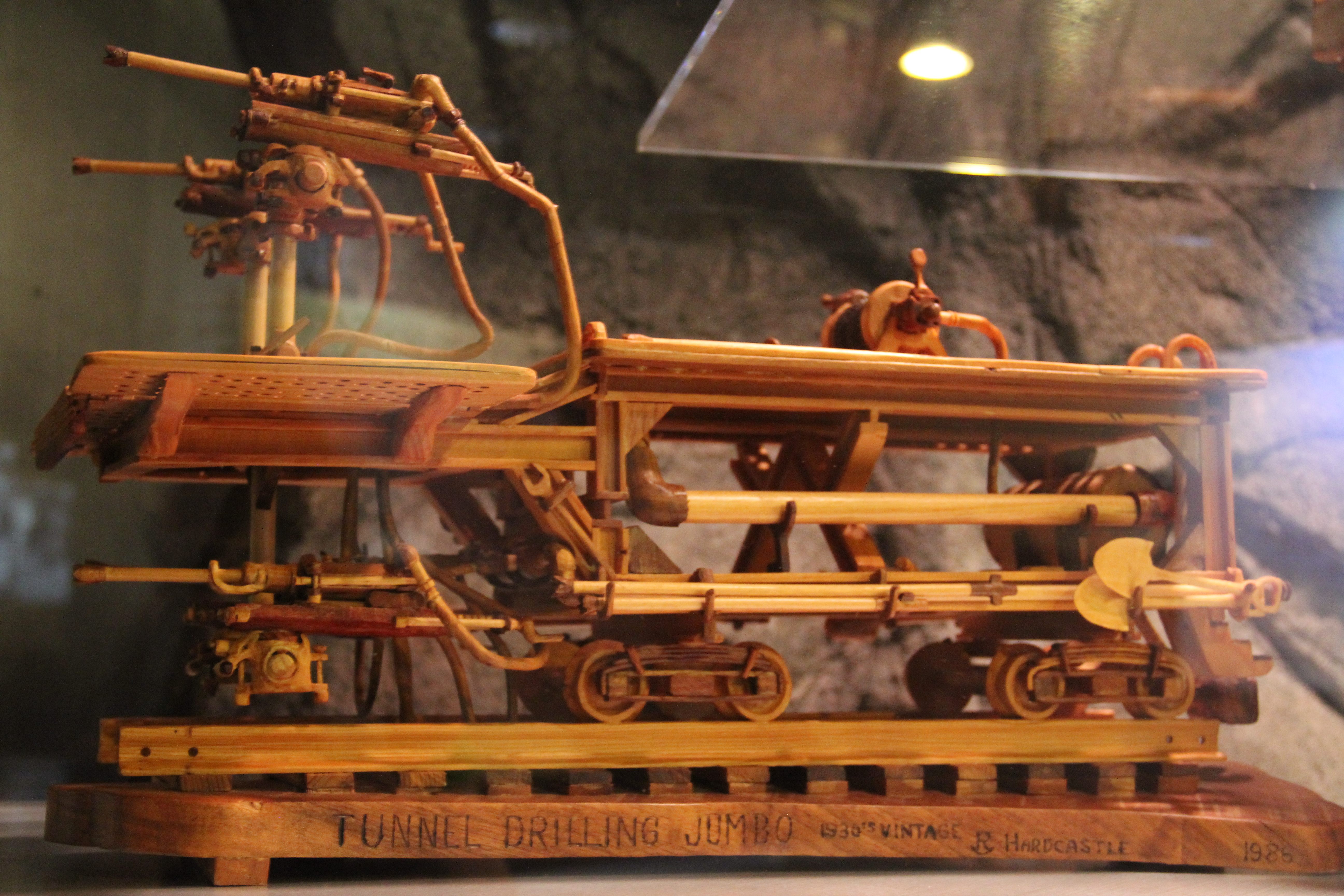
The museum also has a charming collection of machinery models hand-carved by a man with the excellent name of Rocky Hardcastle.
THE PINBALL HALL OF FAME
While the outside of the Pinball Hall of Fame doesn’t look like much the inside is a riot of colors, lights and sound. Turns out that some of the most exciting machines in Las Vegas aren’t even close to slot machines.
Located not far off The Strip in an unassuming building, the Pinball Hall of Fame is beloved by locals and traveling aficionados alike. Home to over 200 machines it is one of the best collections in the country and all of the vintage pinball machines can be played at just 25 cents a pop.
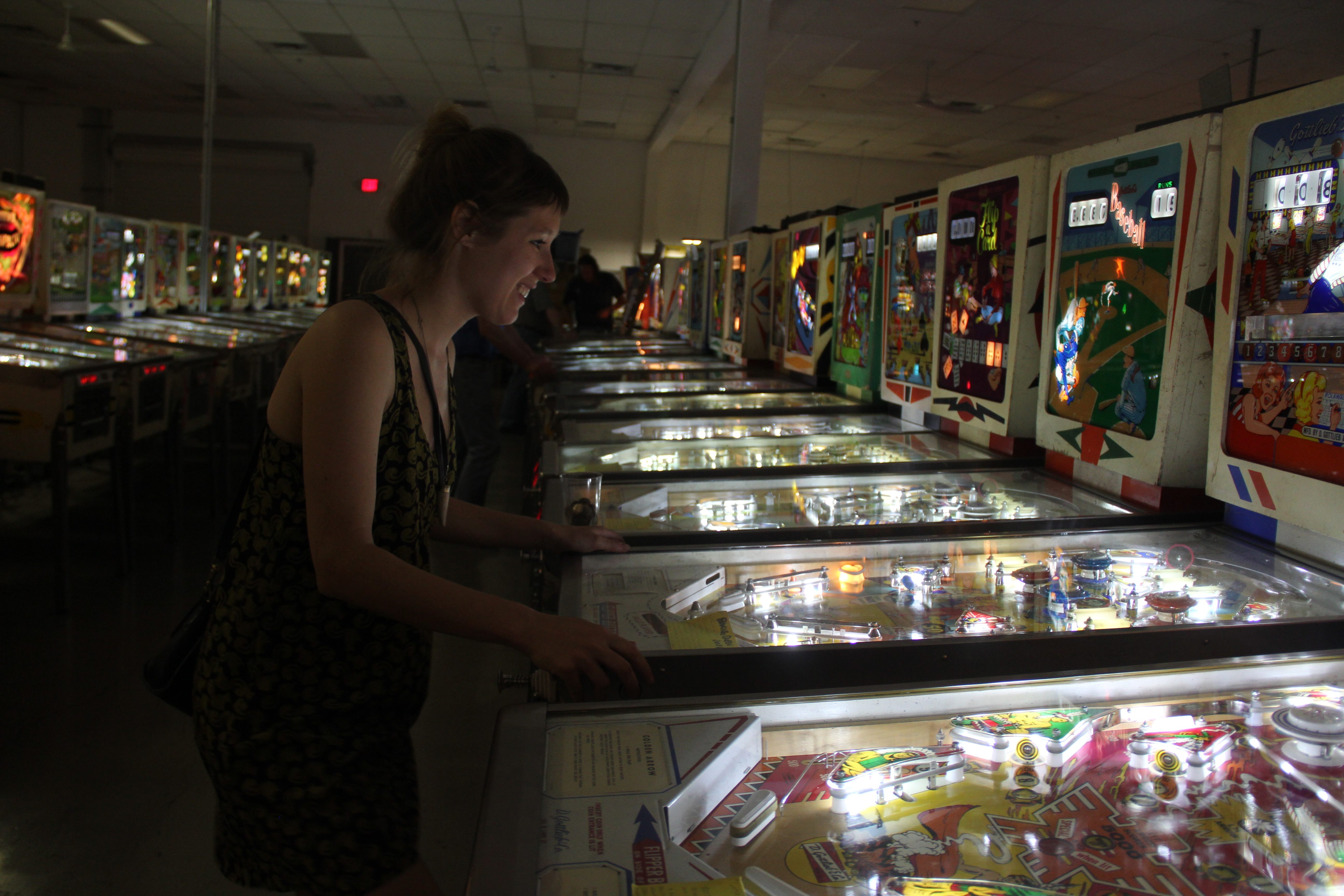
The Pinball Hall of Fame has over 200 vintage pinball machines, all playable.

$10 of quarters gets you a long way.
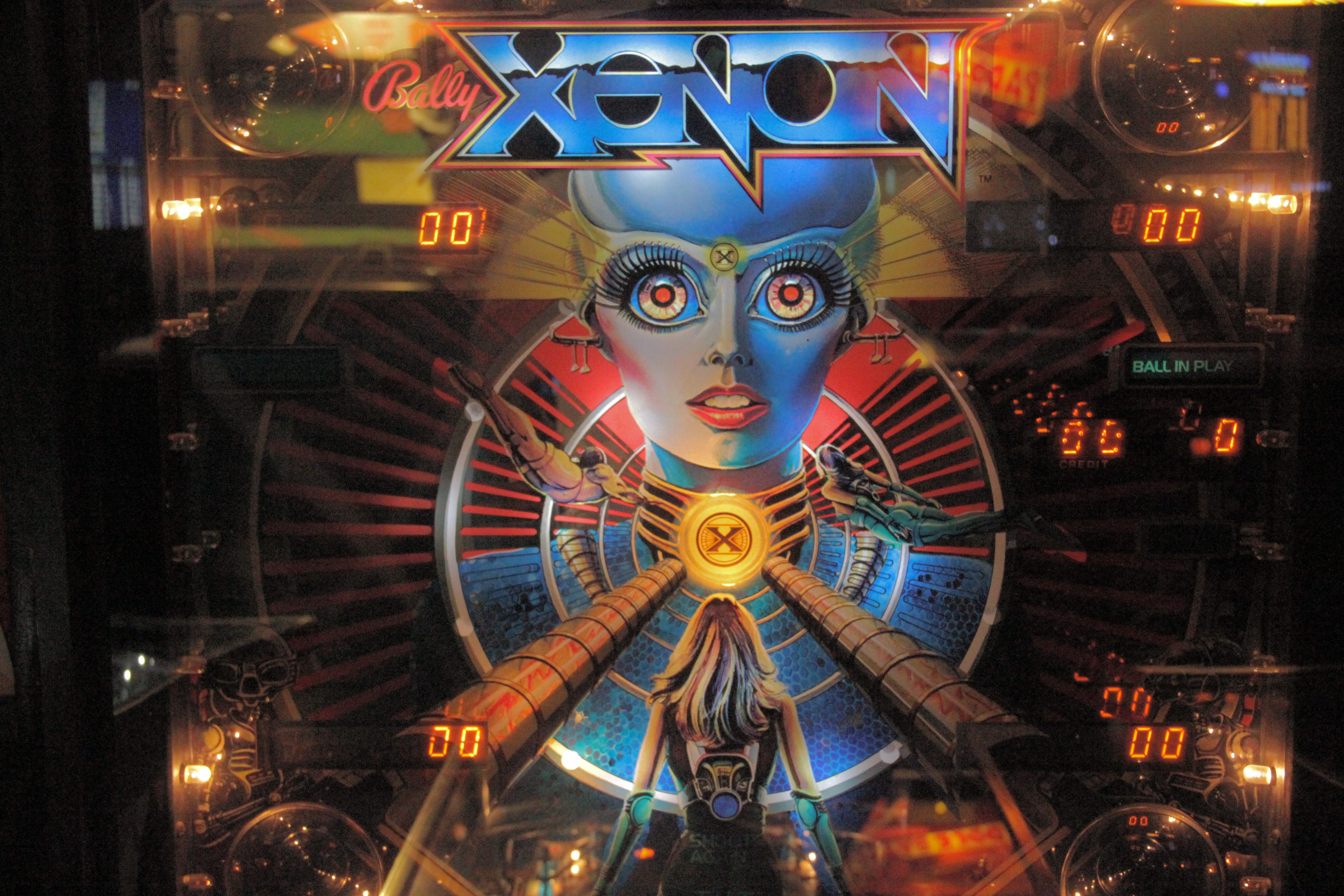
The incredible vintage art is almost as delightful as playing the games themselves.

There are a few non-pinball machines, like this supremely difficult to play basketball game.
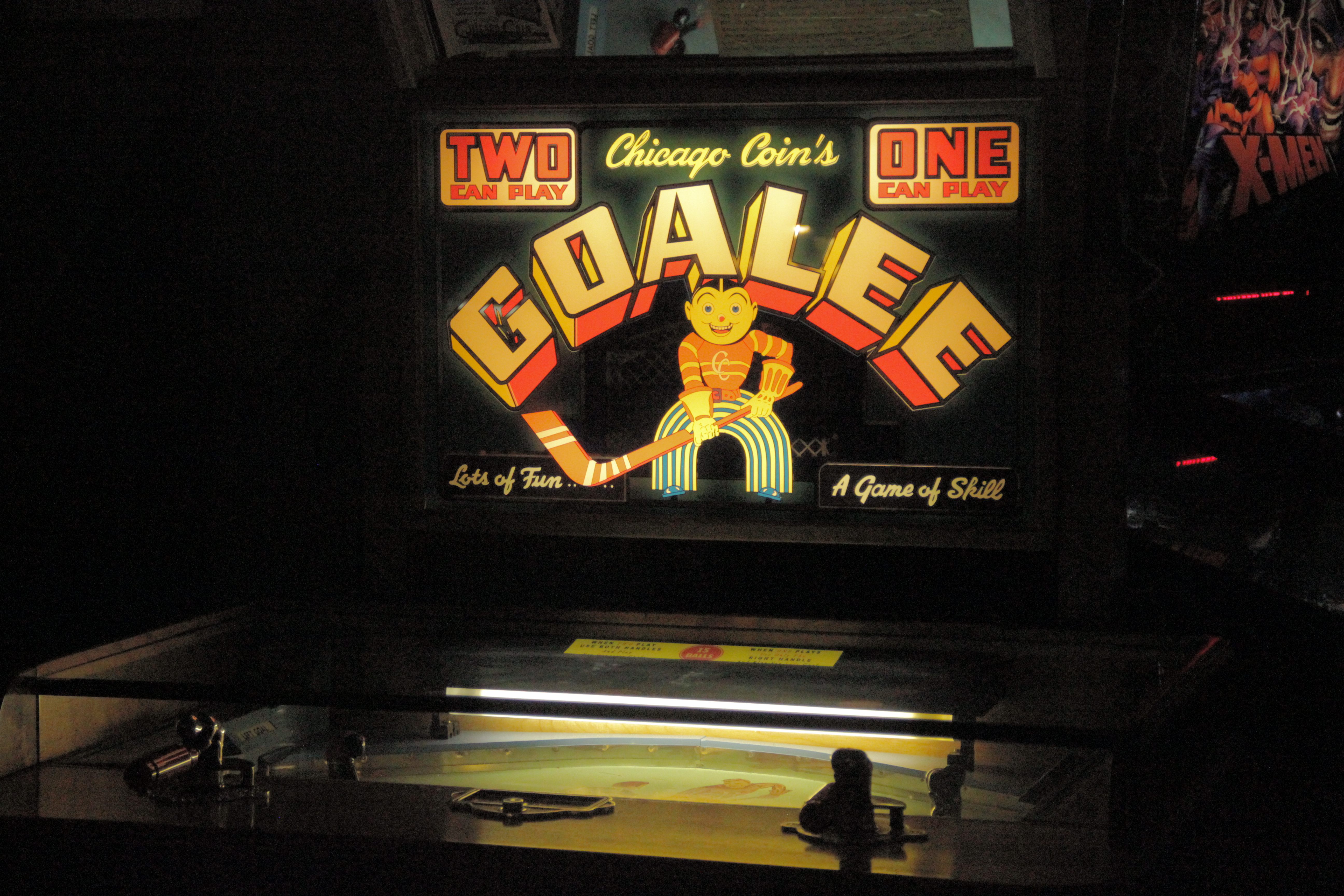
The hockey game with an adorable goalie graphic is also remarkably difficult.
The Pinball Hall of Fame’s owner Tim Arnold was just 16 when he purchased his first pinball game in 1972. He charged neighborhood kids to play it and the seed for the Pinball Hall of Fame was sown.
Arnold went on to operate multiple arcades throughout Michigan and retired to Las Vegas in the 1990s. Having collected over 1000 pinball machines by that time, he opened the Pinball Hall of Fame in 2009. After operational costs, Arnold donates all of the money earned at the Pinball Hall of Fame to charity. Every 25¢ does a tiny bit of good.
FRANKIE’S TIKI ROOM
No trip to Las Vegas would be complete without a drink at a local watering hole, and the curious traveler seeks out a spot with personality. Enter Frankie’s Tiki Room!

The interior is just as one would hope, complete with pufferfish lighting fixtures.
A kitschy tiki aesthetic has a long history on the Las Vegas scene but with the closing of Tiki classics like Don the Beachcomber and Aku Aku at the Stardust in the 1980’s, Tiki establishments were becoming an endangered species. A short lived bar called Taboo Cove opened in The Venetian in 2001 but closed in 2005. Las Vegas was temporarily Tiki-less.
That changed when in 2008 owner P. Moss bought the 50s-era Frankie’s Bar & Cocktail Lounge and brought tiki back to Las Vegas in a big way. Working with Bamboo Ben, the grandson of tiki pioneer Eli Hedley, Moss created custom Frankie’s Tiki mugs and lined the interior with thatch and bamboo decorations and lit it with appropriately dim lights inside pufferfish lighting fixtures.
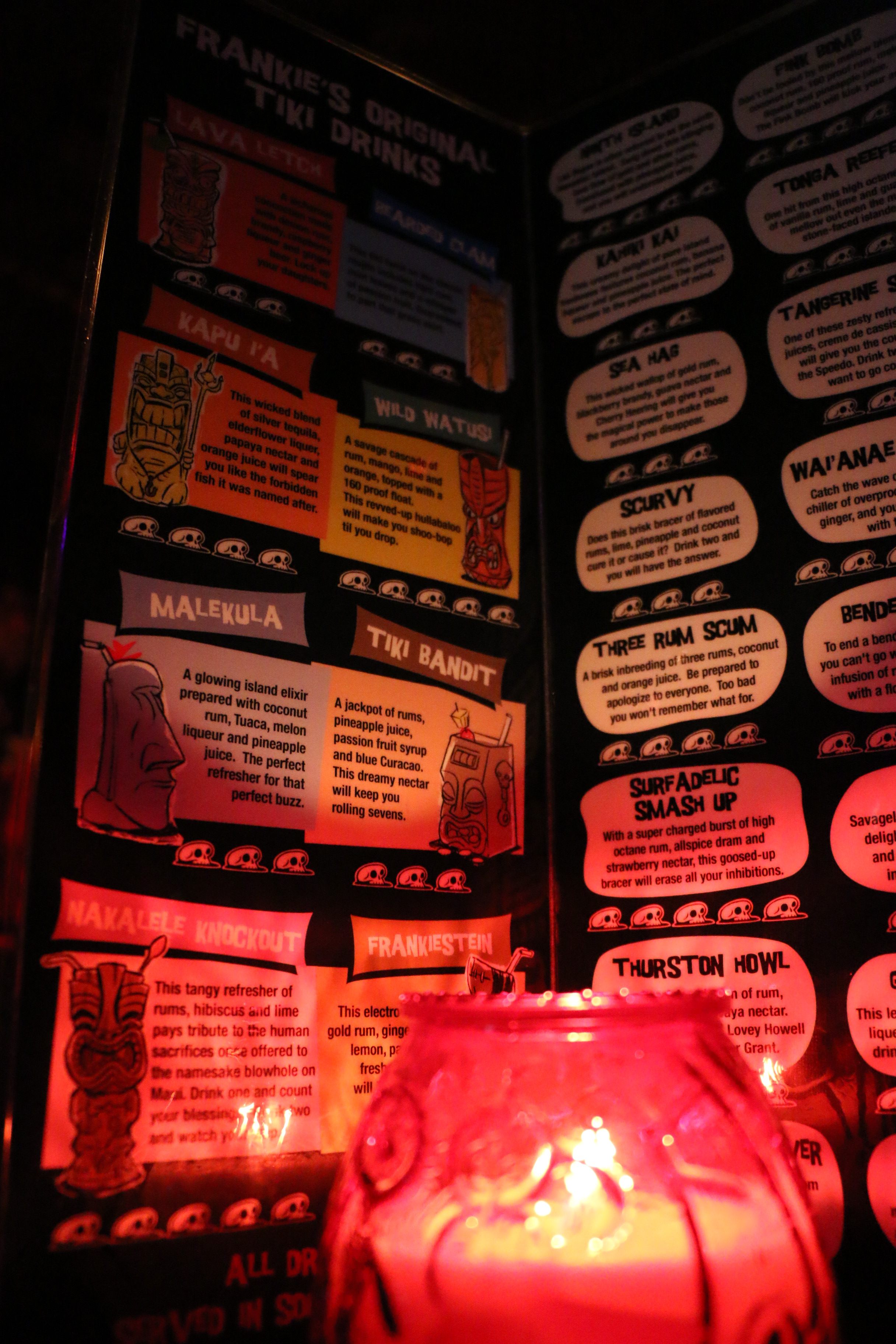
The names of the drinks in the bar are a object lesson in dad jokes from the Frankiestein to the Thurston Howl.
The drinks are terrific blends of classic tiki and creative tiki riffs. The number of skulls on the drink indicates how much booze is in them (after a few “five skullers” you may wake up wondering how many skulls you have). That a day among bombs and boneyards could end on a tacky tropical island is just one more example of Las Vegas’ unending capacity to provide the unexpected—off The Strip, it’s remarkably easy to hit the jackpot.
This post is promoted in partnership with Travel Nevada. Head here to get started on your adventure.






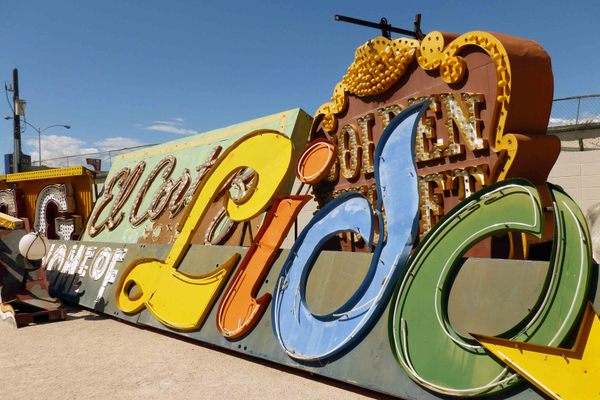






Follow us on Twitter to get the latest on the world's hidden wonders.
Like us on Facebook to get the latest on the world's hidden wonders.
Follow us on Twitter Like us on Facebook